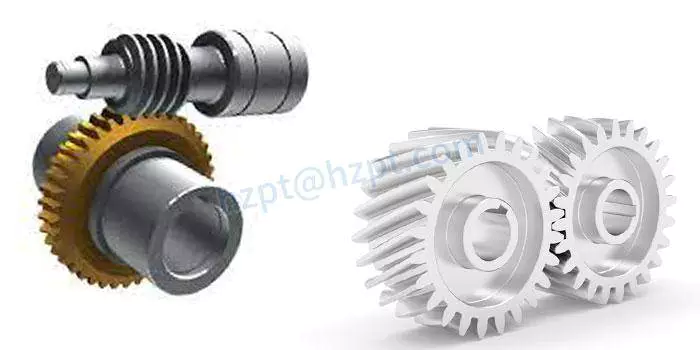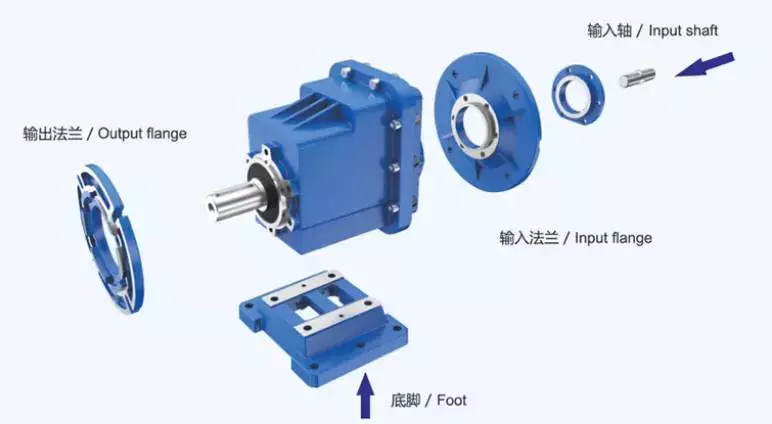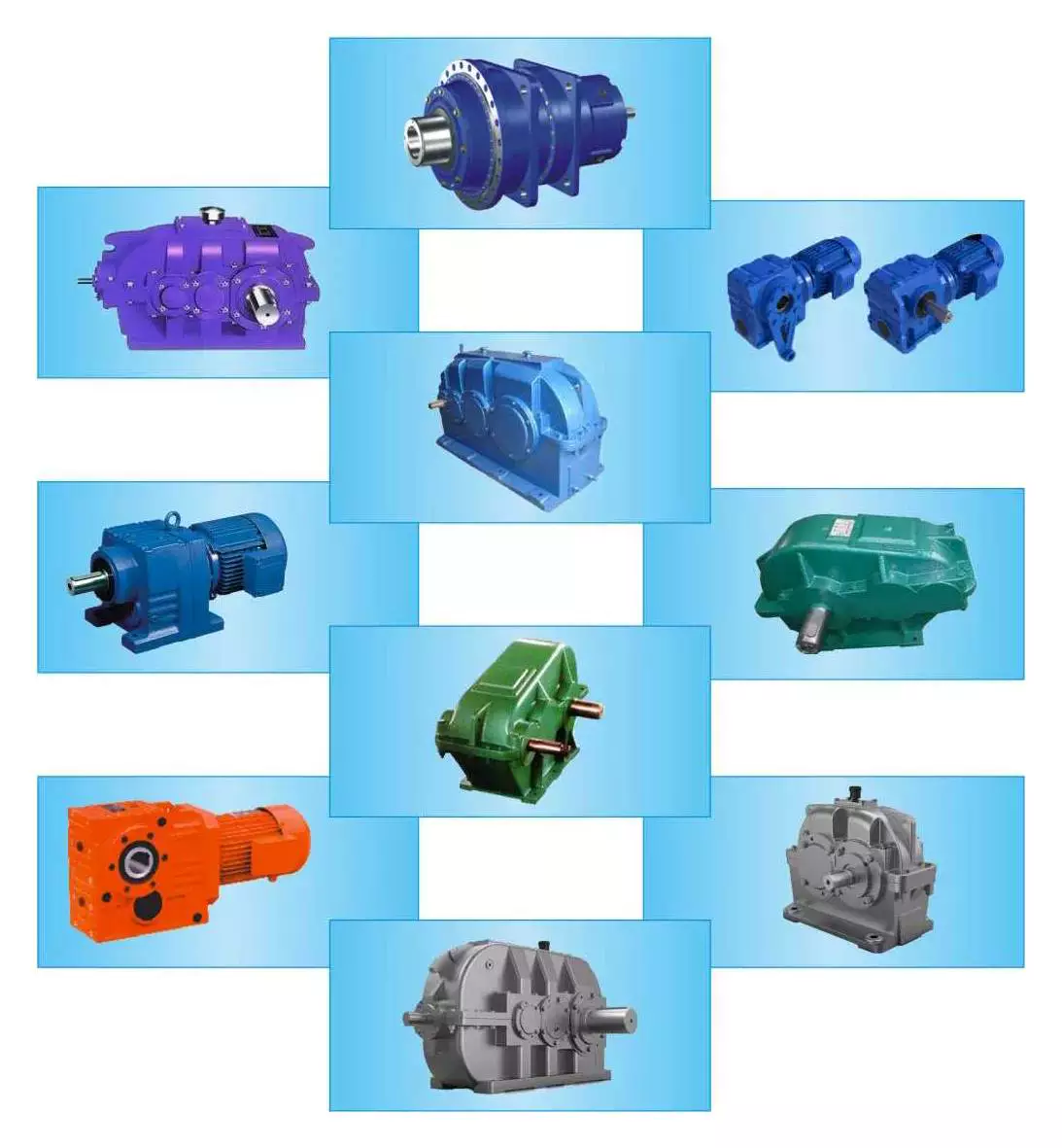Product Description
Model Selection
ZD Leader has a wide range of micro motor production lines in the industry, including DC Motor, AC Motor, Brushless Motor, Planetary Gear Motor, Drum Motor, Planetary Gearbox, RV Reducer and Harmonic Gearbox etc. Through technical innovation and customization, we help you create outstanding application systems and provide flexible solutions for various industrial automation situations.
• Model Selection
Our professional sales representive and technical team will choose the right model and transmission solutions for your usage depend on your specific parameters.
• Drawing Request
If you need more product parameters, catalogues, CAD or 3D drawings, please contact us.
• On Your Need
We can modify standard products or customize them to meet your specific needs.
Product Parameters
Type Of RV Reducer
Application Of RV Reeducer
Precision Cycloidal Gearbox is widely used in industrial machinery fields such as machine tool, robot arm, industrial robot, die-casting feeding machine, manipulator for punching machine, AGV driver, bottle-making machine, UV Printer and etc.
Other Products
Company Profile
| Application: | Motor, Machinery |
|---|---|
| Hardness: | Hardened Tooth Surface |
| Installation: | Vertical Type |
| Layout: | Coaxial |
| Gear Shape: | Conical – Cylindrical Gear |
| Step: | Three-Step |
| Customization: |
Available
| Customized Request |
|---|
Helical Gearbox
Generally, a helical gearbox consists of two gears. The two gears have cut teeth and are inserted into one another. These two gears work together to transmit torque and speed. This type of gearbox is used in a wide variety of applications.
Working principle
Besides being cheaper to make, helical gears have several advantages over straight-cut spur gears. Firstly, they offer a smoother operation, less vibration, and lower noise levels. They also transmit larger loads than spur gears. These gears are used in a variety of industries, such as food processing, plastic industries, and oil industries.
Another important feature of helical gears is the smooth and gradual engagement of teeth. This helps them function more smoothly, especially when working under heavy loads. This process reduces shock and backlash, and also reduces wear.
In addition to this, the helix angle is a variable that can be adjusted to suit the application. The angle is usually either left or right, and can vary based on the view.
Helical gears are usually used in enclosed gear drives, such as conveyors, blowers, and elevators. They offer a smoother operation, which makes them ideal for applications that require quiet operation. However, helical gears are less efficient at transmitting power than spur gears.
The relative contact stress (RCS) calculated for a helical gear is similar to that of a spur gear. However, the volume Vi, which is a helix-dependent quantity, is different. This volume is defined as the total volume of the helical pocket, calculated by integrating along the face width. The volume of a generic pocket is larger than that of a helical pocket without a helix.
In addition, the contact ratio is reduced. This is due to the fact that two teeth are not parallel to each other. A thick oil film prevents the teeth from making contact. This film also cools the gear tooth surfaces.
The service factor is a number that takes into account the conditions under which a gear is used. It is usually a ratio between the maximum torque and the torque produced.
Efficiency
During a recent gearbox measurement campaign, 13 commercial gearboxes were extensively tested. Efficiency was measured at nominal torque and power. The resulting efficiency maps presented in this paper show that the efficiency of each gearbox is fairly similar.
The efficiency of a gearbox depends on the gears’ teeth and the ratio between them. The lower the ratio, the higher the efficiency.
Efficiency is also affected by the load torque. The higher the load torque, the lower the efficiency. This is especially true for gearboxes with high ratios.
The power loss is also affected by the contact and overlap ratios. For gearboxes with high ratios, the difference between the efficiency of the catalog and model-based efficiency is greater than for low-ratio gearboxes. Fortunately, improvements in lubrication are closing this gap.
The helical gearbox is the most effective gearbox in the industry. It transfers motion between parallel configurations and has less noise than spur gears. These gears engage gently and smoothly, so they are less prone to wear and tear. They also allow for greater power carrying capacity.
Although helical gears are effective, they are more expensive than traditional gears. However, the cost savings can be significant over time. It is important to consider the advantages of a helical gearbox before choosing a gearbox for your application.
When comparing the efficiency of a helical gearbox to that of a worm gearbox, the worm gearbox is more efficient. However, the difference in efficiency is not as great as many other gearboxes.
The efficiency of a helical gearbox is also affected by the speed of the gears. The gearbox must have adequate lubrication for bearings. It is also important to consider the space requirements in the drive line.
Applications
helical gearbox applications are widespread and they are used in many industries. Some of the applications include the printing industry, the rubber industry, the plastics industry, the cement industry, the earth-moving industry, and the chemical industry.
helical gearboxes are also used for conveyors and elevators. They are very durable and they can carry larger loads. They are also quieter than straight cuts. They are also used in many automotive transmissions.
helical gearboxes transmit power between two parallel shafts. They are a good substitute for spur gears. They are compact and they reduce vibration and noise. They are also very durable and they can work in non-parallel shafts.
The most common application is in the automotive industry. Helical gearboxes are also used in other industries. They are very useful in elevators, conveyors, and other heavy industrial settings. They also provide a high level of speed reduction and they are commonly used in automation control systems. They are also used in the mining industry and the cement industry.
helical gearboxes can be fabricated with various modifications. This is important because some industries may require different gearboxes.
Helical gears have a higher number of teeth. This leads to less wear and tear. They are also less noisy than spur gears. Their ability to generate a large thrust force is what makes them ideal for high-speed applications. They are also able to distribute load among several axes. They are also used in high shock and vibration applications.
helical gearboxes work at a higher efficiency than spur gears. However, the manufacturing costs for helical gears are greater than for spur gears.
helical gearboxes also have the advantage of transferring power between right-angle shafts. They can work in conjunction with crossed axis gears, which eliminate shock loading.
Variations
Several variations of helical gearbox are available in the market for different industries. They are widely used in automobile transmissions and other industries. They are quieter than spur gears. They are also durable and are highly efficient. However, they can cause higher friction and wear.
Helical gears are made of teeth that twist around a cylindrical gear body at an angle. The angle at which the gear teeth are cut is called the helix angle. The helix angle can be adjusted to fit the gear and its surroundings.
The helix angle also determines how much axial force the gear produces. A larger helix angle will generate more axial force. This increase in axial force must be absorbed by the bearings. The pressure angle also has a direct impact on the normal force and curvature radii of the tooth.
Helical gears can be mounted in parallel or crossed configuration. Helical gears connected in parallel require the same pitch and pressure angle to work correctly. Helical gears connected in crossed configuration can operate more quietly and smoothly than spur gears. However, they can also be used to transmit higher torques.
Helical gears are also available in single and double helical designs. Single helical gears are produced with the same tools and equipment as spur gears. Unlike spur gears, single helical gears have more surface contact. They are also better for precision drives.
Double helical gears are also called herringbone gears. They are produced by cutting a groove between two teeth. They can eliminate axial forces and are also used to provide high load carrying capacity.
Helical gears are commonly used for low power transmission applications. They also provide an alternative for connecting parallel and non-parallel shafts. They are also used in high speed applications.
Tool tip radius
Among the many parameters that are used in a helical gearbox design, the tooth tip radius is probably the most important, albeit only because it is one of the least intuitive. The best way to estimate the diameter of a helical gear tooth is to use a tooth reference profile as the basis for the calculation. A similar procedure is used to calculate the helix angle. A tool tip that is too small will result in a tooth that undercuts, which is a problem if you have a gear that has a high number of teeth and you want to reduce the chance of tooth failure.
For the gear buffs, there are many helical gearbox tools and processes, the tip diameter being but one of them. Luckily for gear design geeks, there is a lot more to the helical gearbox than meets the eye. For example, a helical gear tooth is a three-dimensional surface, so its shape and function can be computed mathematically or numerically.
In addition to a tooth tip that flies by the seat of your pants, the helical gearbox is also the product of a manufacturing process. The main culprit is the profile shift, which is the distance between the gear pitch diameter and the datum line of the cutting tool. While a gear designer could choose to ignore this issue, it is often a design consideration for the benefit of maximizing contact ratios. This means that the gear teeth must be able to withstand the torque of their respective gear trains.
A helical gear is a geometric package, and the best way to package the gears is to minimize tooth bending strength while maximizing tooth bending stiffness. To do this, you must limit the thickness of your tooth tip. This is usually accomplished with a tooth profile that is shaped to match the tooth contour of the gear it is intended to replace.
editor by CX 2023-04-28




